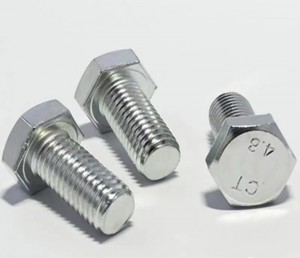1. Basic Requirements for Bolt Connection

● For general bolted connections, flat washers should be placed under the bolt head and nut to increase the pressure bearing area.
● Flat washers should be placed on the bolt head and nut side respectively. Generally, there should be no more than two flat washers on the bolt head side, and no more than one flat washer on the nut side.
●For the bolts and anchor bolts designed with anti-loosening device, the nut or spring washer with anti-loosening device should be used, and the spring washer must be set on the side of the nut.
● For bolted connections bearing dynamic loads or important parts, spring washers should be placed according to the design requirements, and the spring washers must be set on the side of the nut.
● For I-beam and channel type steels, inclined washers should be used when connecting with inclined surfaces, so that the bearing surfaces of the nut and the head of the bolt are perpendicular to the screw.
2. Classification Requirements for Bolt Positions
According to the position and function of the bolts in the distribution line, the bolts can be divided into three types: electrical connection, electrical equipment fixing, and iron attachment fixing. The specific instructions are as follows:
● Electrical connection: Outdoor primary wiring should be connected with hot-dip galvanized bolts. The bolts used should have flat washers and spring washers. After the bolts are tightened, the bolts should be exposed 2 to 3 buckles. One bolt with two flat washers, one spring washer and one nut. When installing, place a flat washer on the head side of the bolt, and place a flat washer and a spring washer on the nut side, where the spring washer rests on the nut.
● Electrical equipment fixing category: transformers, distribution box bases and iron accessories are connected. For example, when using channel steel bevel bolts to connect and fix, one bolt is equipped with one nut, one oblique washer (for channel steel bevel side) and one flat washer (flat surface). 2 side use). When using channel steel flat bolts to connect and fix, one bolt is equipped with two flat washers, one spring washer and one nut. When installing, place a flat washer on the head side of the bolt, and place a flat washer and a spring washer on the nut side, where the spring washer rests on the nut. The connection between the isolating switch, drop-out fuse, arrester and iron accessories, in principle, use the mounting bolts provided by the equipment manufacturer.
● Fixing iron accessories: when the connecting bolt holes of iron accessories are round holes, one bolt is equipped with one nut and two flat washers; when the connecting bolt holes of iron accessories are long holes, one bolt is equipped with one nut and two square washers , place a flat washer (square washer) on the bolt head side and the nut side during installation. When stud bolts are used for the connection of iron accessories, each end of the bolt shall be equipped with a nut and a flat washer (square washer). For the bolt connection of the inclined surface on the channel steel and the I-beam flange, try to use the inclined washer so that the bearing surface of the nut and the head of the bolt is perpendicular to the screw rod.
3. Threading Requirements for Bolts
● Pair of three-dimensional structures: the horizontal direction is from the inside to the outside; the vertical direction is from the bottom to the top.
● Pairs of plane structures: in the direction of the line, the double-sided components are from the inside to the outside, and the single-sided components are penetrated from the power transmission side or in the same direction; in the horizontal line direction, the two sides are from the inside to the outside, and the middle is from left to right (facing the power receiving side). ) or in a uniform direction; vertical direction, from bottom to top.
● Planar structure of the transformer bench: take the high and low voltage terminals of the transformer as the reference direction, and pass from the low voltage terminal to the high voltage terminal; take the transformer and the pole as the reference direction, pass from the transformer side to the pole side (from the inside to the outside) ).
Post time: Aug-24-2022




